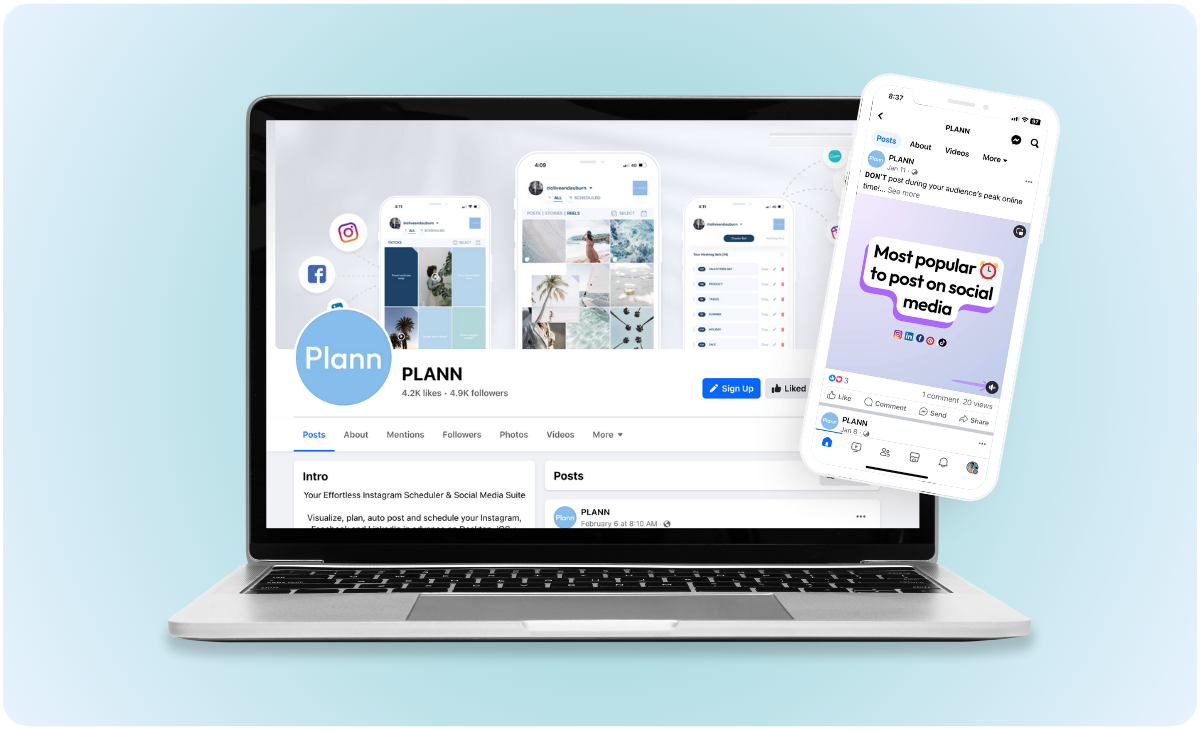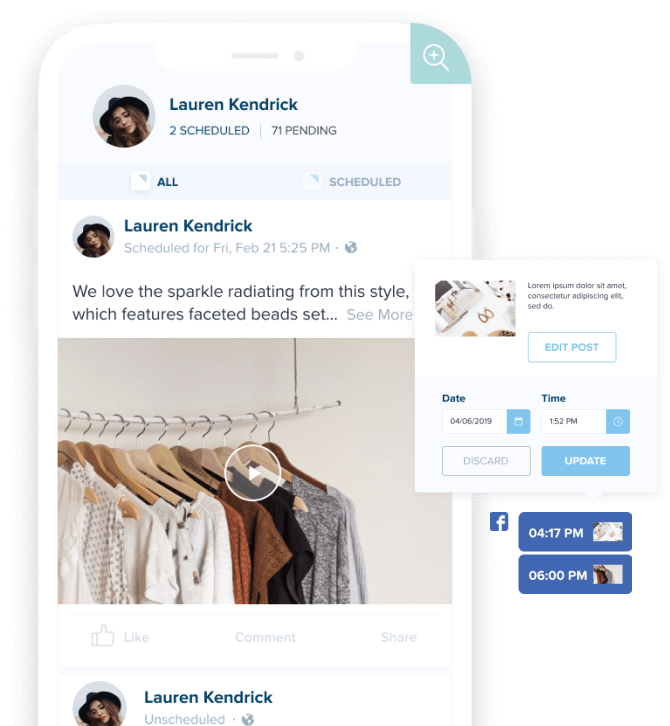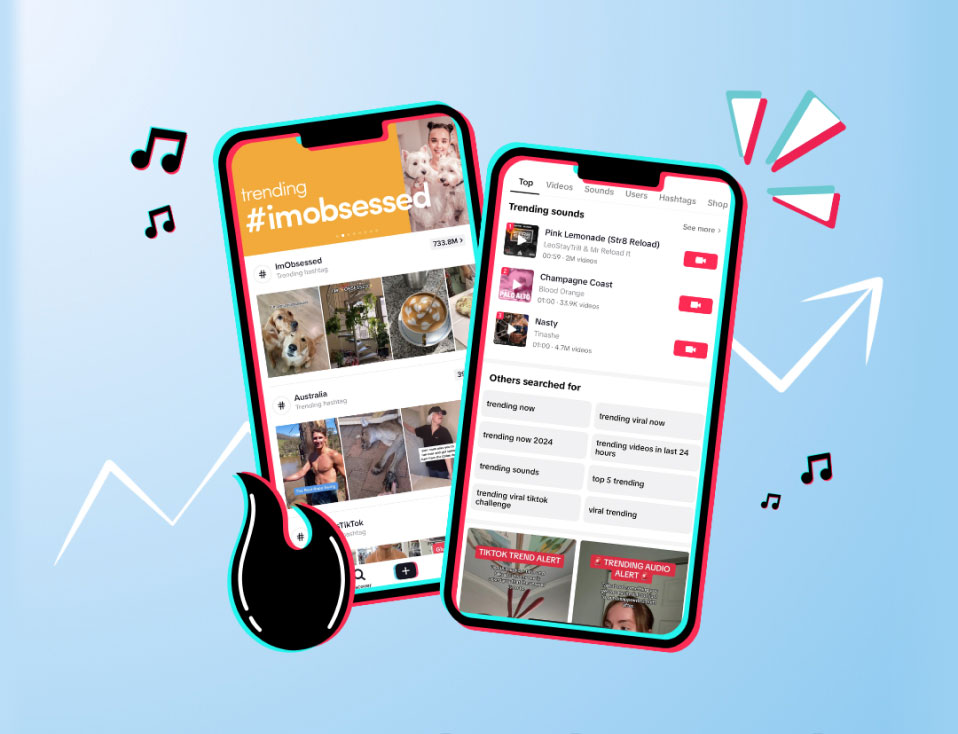Over the past few years, Facebook’s popularity has seemingly been overtaken by growing social media platforms, like Instagram and TikTok. But is the age of Facebook over? Absolutely not!
In fact, Facebook is still one of the world’s largest apps, with over 2 billion users visiting the network every single day. As such, Facebook is home to a broad and diverse audience. This provides a myriad of marketing and growth opportunities designed to boost brands and businesses just like yours.
By learning more about the impact of Facebook, you can discover new ways to optimize visibility and achieve better reach results. Over time, this will help you grow your audience and reach more engaged consumers. A good Facebook strategy can even drive sales conversions and subsequently boost your business earnings.
So what are you waiting for? Let’s get started!
How Facebook Content Can Help You Succeed
Many social platforms have a tendency to target specific groups of people, whether that’s based on age, interest, political opinion, or something else. On Facebook, things work a little differently.
As one of the key platforms that heralded the transition to the social media age, Facebook remains home to a highly varied user base. Anyone is welcome to become a Facebook user. This means that you can easily reach out to a wide range of people, all in one convenient location.
The good news doesn’t stop there. In 2021, Facebook joined forces with Instagram and became Meta. As part of the Meta Suite, you can use combined tools to target two distinct audiences across both the Facebook and Instagram applications.
On Facebook, people are engaged in communities. Frequently, the platform is used a communications tool. If you can become part of the conversation, you can get people talking about your brand and what it can offer in the marketplace.
How to Optimize: Your First Steps on Facebook
If you’re ready to optimize your Facebook content in hopes of achieving greater visibility and reach results, you’ve come to the right place. Here are some of our top tips.
Curating a Well-Structured Facebook Page
Before you start worrying about your individual Facebook posts, you need to ensure that you’ve structured your Facebook page as effectively as possible. Remember, your page is a hub for your Facebook community and delivers an important first impression.
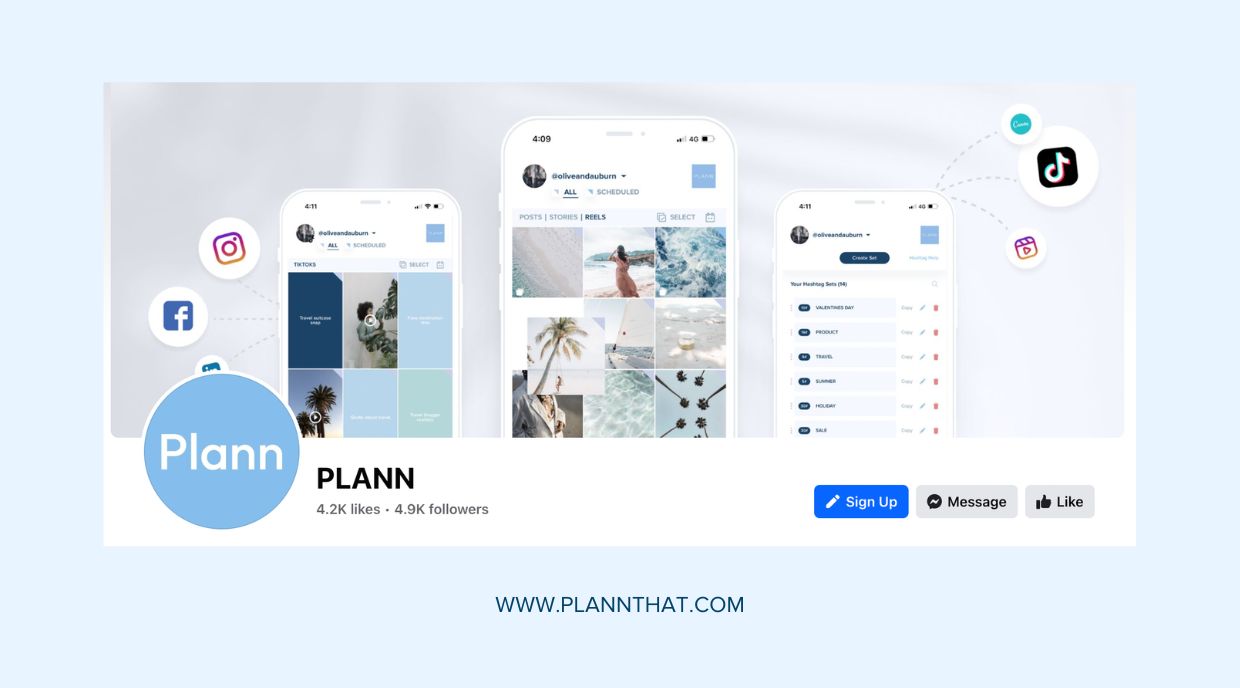 When setting up your Facebook page, take time to focus on the details. Add a clear and well-branded logo, along with a background image that highlights the value of your brand. Consider adding a keyword-rich page description, and provide features like maps where relevant.
When setting up your Facebook page, take time to focus on the details. Add a clear and well-branded logo, along with a background image that highlights the value of your brand. Consider adding a keyword-rich page description, and provide features like maps where relevant.
Don’t forget to make your brand easy to find elsewhere online! In your Facebook settings, you’ll be able to upload website and other social media links that direct users to your presence across other platforms.
Setting Clear Facebook Marketing Goals
Next, it’s time to start thinking about the marketing goals you want to pursue. A goal-driven approach can give you a framework for your strategic planning and allow you to recognize success when you see it.
What do you want your Facebook content to achieve, and which metrics are most important to you? You might seek to expand your community by growing your follower count. Alternatively, you may want to increase engagement results or simply ensure that your content reaches more users.
When you know what you’re setting out to achieve, you can tailor your next steps accordingly. This can guide you towards the right content formats and growth strategies that directly link to your unique goals.
Understanding the Facebook Algorithm
The Facebook algorithm is your greatest asset when it comes to scaling your account and improving visibility online. Learning to work with the algorithm will enable you to get the most out of your content.
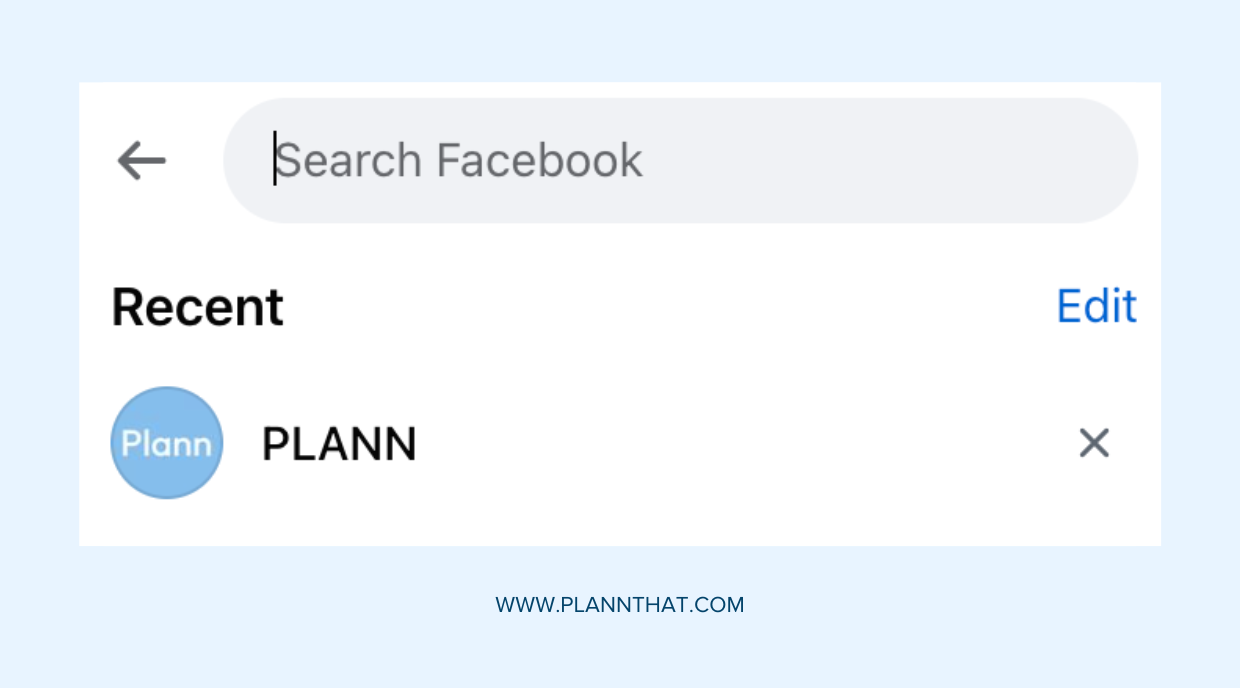 Like other search engines and social media platforms, Facebook is designed to respond to search engine optimization, or SEO. This allows you to incorporate specific, targeted keywords relevant to your brand so that your content shows up in search results.
Like other search engines and social media platforms, Facebook is designed to respond to search engine optimization, or SEO. This allows you to incorporate specific, targeted keywords relevant to your brand so that your content shows up in search results.
Effective keyword use can be a major driving force in enhancing organic reach. You can get engaging content in front of the right audiences based on clear and relevant topics that users want to learn more about.
Ready to boost your Facebook content’s visibility with SEO? Here’s where to start:
- Inject searchable keywords and phrases into your Facebook captions.
- Leverage hashtags related to SEO terms to boost the ranking of your content.
- Ensure alt-text or video titles are added and leverage SEO keywords.
Getting to Know Your Facebook Audience
While growing your Facebook account has value, it’s also important to get to know your existing audience. This can provide great insights that will help you better understand and serve your community.
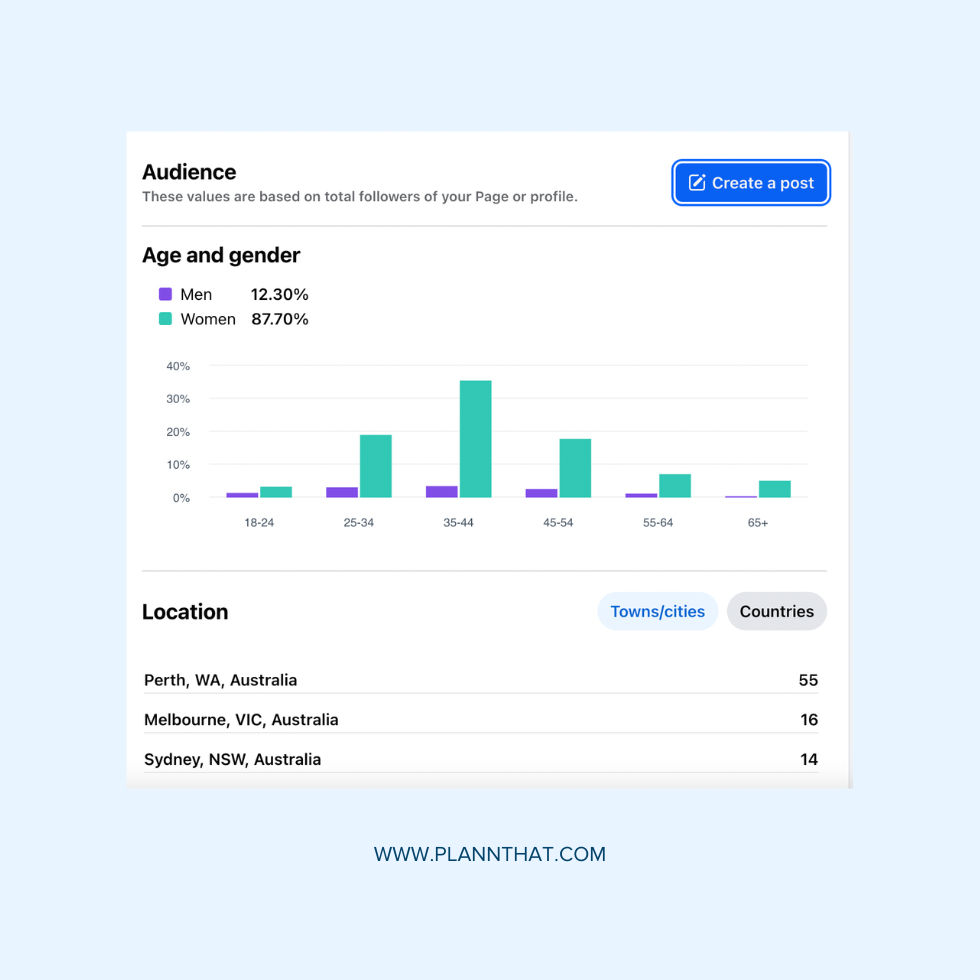 Search your Facebook analytics, and develop your knowledge of key demographics. Who views your content, and what do users enjoy most? This valuable information can change the way you share materials for different audiences and impact your communications style.
Search your Facebook analytics, and develop your knowledge of key demographics. Who views your content, and what do users enjoy most? This valuable information can change the way you share materials for different audiences and impact your communications style.
Make sure to gain an understanding of your:
- Audience demographics: such as the age, gender and location of your audience
- Content performance: what posts are the highest and lowest performing, based on reach?
- Account performance: what posts or types of content are causing a spike in reach, engagements or new followers?
The more you know about how users interact with your account and the content you share, the more engagement you can pursue, and the more impact you can make. This is about more than just boosting online reach. It’s about building long-term digital trust and relationships.
Using the Full Suite of Sharing Features
Once you know who your content is for, you can get to work on the content itself. Producing high-quality captions, images, and videos is just the beginning. You also need to think about the tools involved in the publishing process.
Facebook offers a wide range of features that control how your post appears and influence your content’s visibility. Use the full suite of tools! Make the most of alt text and captions, where you can use extra keywords. Don’t be afraid to try tags, reactions, gifs, check-ins, and more.
Hot tip: Make sure to leverage Meta’s Business Suite, offering a range of analytics, content management and insights tools that can help you see what content placements and features you can tap into.
When you use everything Facebook has to offer, you can learn more about which features work best for your brand. Often, the Facebook algorithm also rewards users who truly engage with all the app’s benefits. Simply trying new controls could give your account a nice ‘thank you’ boost.
Exploring Paid Advertising Opportunities
Last but not least, if organic reach isn’t quite enough to help you reach your goals, you can explore Facebook’s paid advertising mechanisms. Even a single campaign may be enough to get you started and supporting ongoing growth.
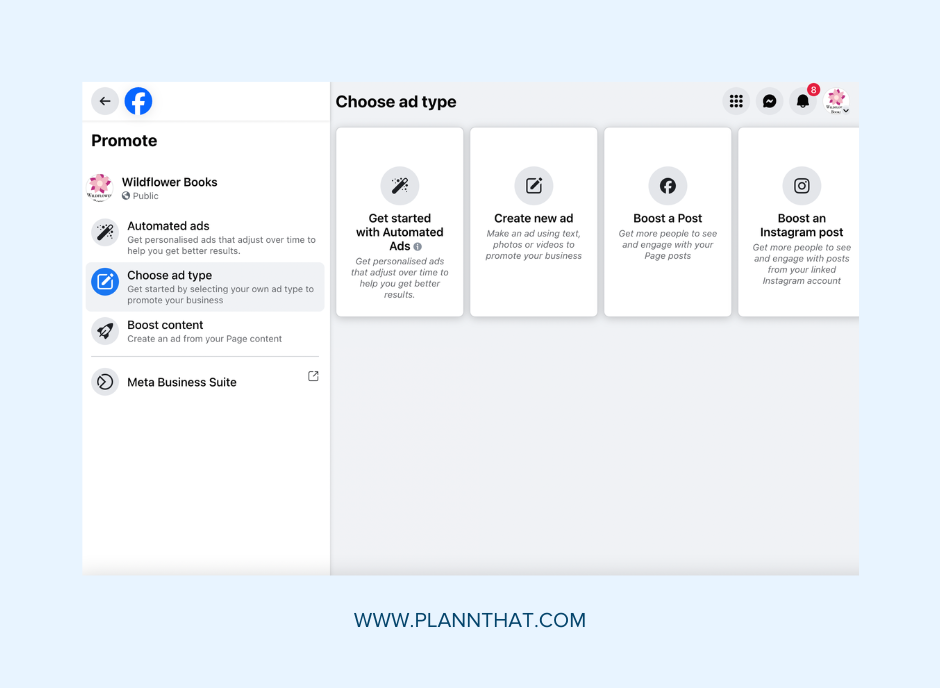 You can use ad settings to directly market content toward specific groups and demographics, allowing you to curate your community outreach.
You can use ad settings to directly market content toward specific groups and demographics, allowing you to curate your community outreach.
Online advertising is powerful and may even be the best way to break out of a slump if you’re struggling to gain traction for your account. Better yet is the fact that paid ads and organic reach can work together, steering your growth in the right direction for the long-term.
Hot tip: Remember that your organic and paid content needs to work hand-in-hand on social media. Use organic content to test new formats and post ideas, and amplify your highest-performing posts using paid ad campaigns. Organic content is the perfect ad creative!
Plann for Facebook Success
Facebook is an incredible resource in any marketing strategy, so it’s important not to overlook it. But what if you’re already burnt out by managing too many different social media accounts?
Luckily, there’s an easy solution. Instead of stressing out over last-minute content, you can rely on an intuitive app-based system to schedule ahead and Plann with ease. You can even repurpose content from other social platforms so that your content creation work makes double the impact.
Does this sound like everything you’ve been searching for? Then get started today! Sign up now for a FREE 7-day trial of Plann.
